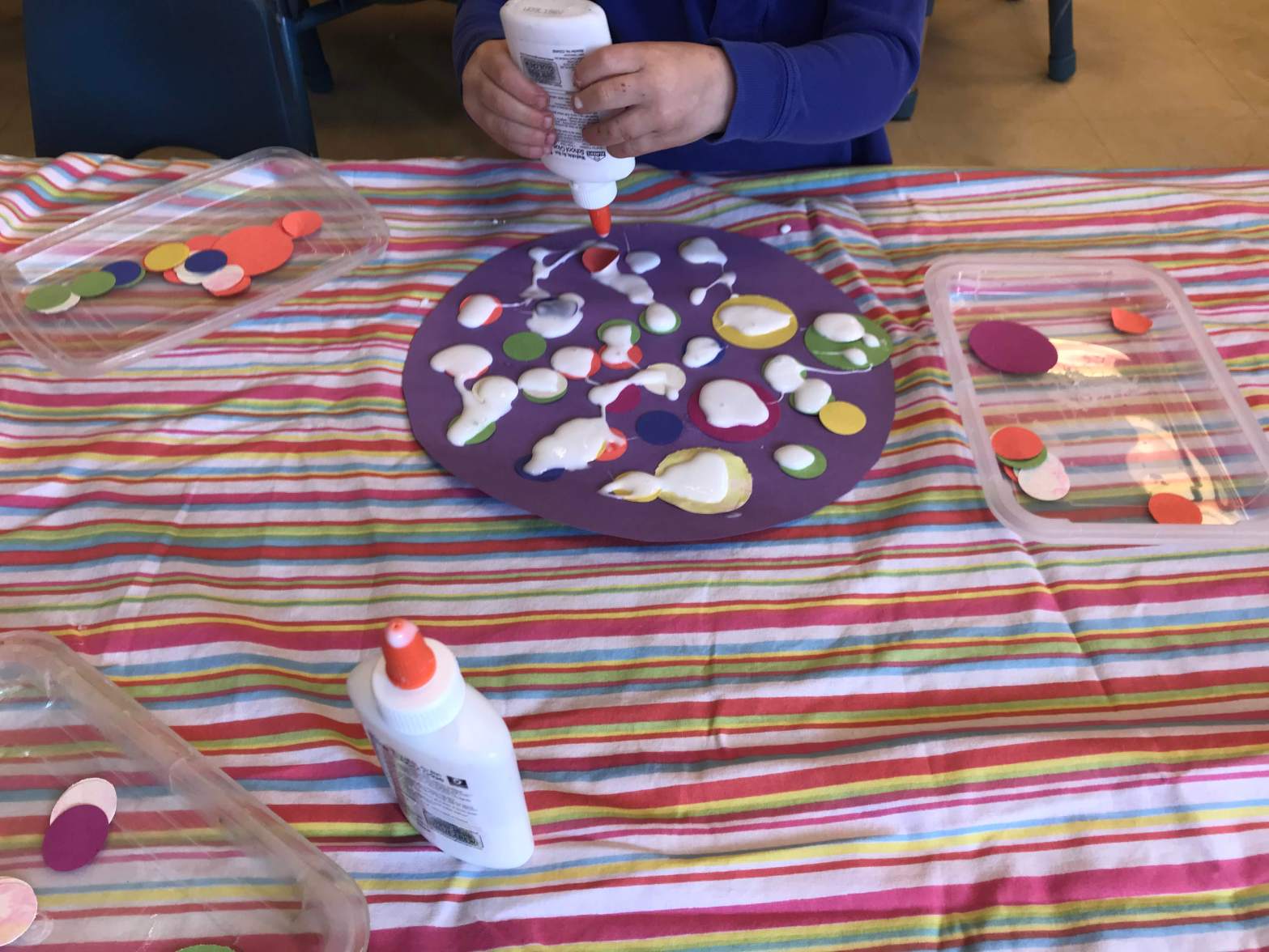Here is a sample project we are doing during Week 1 Virtual Camp session, We Are The Dinosaurs. Children can explore applying paint to bubble wrap to create scaly-looking dinosaur art.
Art for young children puts them in the driver’s seat
One of the things I enjoy the most about working with young children is providing them opportunities to engage in making and exploring art. For most adults, when we think about art, we tend to think about the outcome: a striking painting or sculpture that we see on a wall or in a museum. But for young children (and for artists of all ages), art is very much about the process of making the art.
For young preschoolers, aged two and three, art is very much about the process of moving materials around, exploring cause and effect, and feeling different textures, as well as learning how to use different art tools and implements. (For older preschoolers, the process is still the most valuable aspect of engaging in art, but four- and five-year-olds also have greater fine motor skills and a growing interest in the outcome — what it looks like.) When a young child engages with an art project, the benefit to the child is in exploring and moving things around, making choices about quantity and color (e.g., “I want a lot of blue!”, or placing collage items one-by-one vs. by the handful).
Art opportunities that are planned well for young children put them in the driver’s seat, letting them make it how they want to make it. This is why a project which is primarily about the representation — what it looks like — is not really appropriate for young preschoolers. Quality art projects for young children are designed with intention about how much structure and guidance the adult provides, and how much creativity and freedom the child exercises within the parameters of the project.
Some art projects are entirely open-ended, and just provide the art medium, such as paper and paint. Other art projects will provide more structure and guidance but retain open-ended aspects, such as making a collage in the shape of a shark with mixed materials placed wherever the child wants to. In this structured example, the adult provides a framework, and the child still exercises their creativity and exploration of materials within the framework of the project (ideally with the opportunity to exit the framework of the project if that is what the child is most interested in).
Providing children with freedom to use their creativity does not mean that absolutely anything goes — I generally do not allow children to fling paint around the room! (Although it would be fun to provide a structured situation, maybe outside and into a large box, to try out paint flinging on occasion!).
At the virtual summer camp, I will provide children opportunities to explore different art media (paint, glue, markers, paper, natural materials, chalk) while making their own creative choices. This is what makes for art exploration that children enjoy and benefit from engaging in.
Welcome!
I’m so glad you’re visiting my Virtual Summer Camp site. Click around here so you can see if this set of preschool playful learning is for you and your family this summer.
I never thought I’d be offering a virtual summer camp. I believe that the best learning for young children is done in-person, hands-on; and I practice what I preach, teaching twos and threes in a morning preschool program during the school year (read more on the About page).

But these are no ordinary times. When the preschool I work at closed due to the pandemic, I, like many educators, suddenly was thrust into offering some small part of the preschool experience from afar. While in-person would definitely be better, we did pretty well, with children and families staying engaged and feeling supported.
And that is what this virtual summer camp will provide. If you are looking for some pre-planned activities with instructions, a little messy creative fun, some great children’s books, and the opportunity to connect virtually on a weekly basis, this may be the virtual camp for you.
Also, if you are thinking about signing up for my virtual summer camp, you can subscribe to this site at the link below to get these updates from me about camp plans and early learning suggestions for your children.
I hope you join us!

